There is Untapped Potential in a Good Read Aloud
How do I use a read aloud in my ELA/SS Classroom? I teach language arts and social studies, and I love it. One of my favorite parts of the day is read aloud time. Yes, I love to ham it up and give voice to the characters, pause for dramatic effect, vary my inflection for suspense…all that good stuff. But early on in my teaching career, I realized that the read aloud had more potential than simply grabbing student attention to listen to great literature (which is also amazing!). It occurred to me that when I read aloud, it creates a common experience with a piece of literature, and I can use the power of our experience in endless ways. Here’s how I use my class read aloud as a central academic tool in my classroom.
1. Read Alouds and Literary Elements
My class read aloud becomes a story we all have in common, and it is a reference point for much of what we do in reading. Since I’m reading the novel aloud, all students can access the content. Kids in my classroom have a personal reading novel pretty much at all times, and we apply the skills from the read aloud to independent reading. So if I want to teach the importance of setting, I refer to setting during our read aloud. In fact, we’ll sketch several settings from the read aloud and discuss how these settings play a major role in the storyline. From there, we can analyze how other settings in the read aloud novel are less significant to the story. We then compare the setting of our read aloud to the setting in our personal novels. It’s crucial that students recognize that not all novels have setting as a key component to the story. This is the author’s choice, and we discuss how different our novels may be.
Directly teach complex text analysis with your read aloud
Setting can be much more powerfully subtle than characters being trapped on a glacier with their life hanging by a thread. Setting can dictate the economic advantage or disadvantage of a character, religious belief, education level, etc. Unless directly taught, many students might not pick up on these aspects of setting. Having a novel to refer to that we all understand helps students grasp more complicated ideas they may not have accessed in their personal reading up to this point.
We do activities on each element of literature during the 4-5 weeks it takes me to finish out first read aloud. Students keep the activities in their binders because we refer back to the work throughout the year. Within the first month, we touch on plot, setting, character, conflict, theme (see what I use for introducing theme here), author’s craft, and more. You can see how there’s a year’s worth of curriculum in a read aloud. There are times I read parts of the read aloud again, even months after finishing it, to refresh our memory and to address a concept we’re trying to learn.
2. Read Alouds and Mentor Writing Responses
I write about our class novel on our reading response pages, and students use my responses as a mentor sentences for their response.(See this link to reading response logs for the entire year). If I’m trying to teach students how to respond to a prompt about character trait, I can refer back to our read aloud and to characters we all know. During the actual reading of the book, I target character as an element of literature. We’ll do activities about the traits (see this link for helping teach character trait) of a main character and how one of their traits may impact the decisions that they make.

Character Trait Fun!
So if my writing prompt for student independent reading work is “What’s one important character trait of your main character that impacts the his or her decisions?” then I model an example response to this prompt using our read aloud as my novel. Students use my response as a mentor response. I point out the structure of my sentence, how to rephrase the prompt in the answer, how to pick the character trait and include a specific example. Additionally, we’re looking at capitalization, punctuation, titles, grammar, and spelling. (See this blog post for tips on increasing engagement in editing and revising writing.) What they’re really doing is using my response as a mentor response. We analyze why the response works and what we could add to make it the best it can be. I even model struggling for the best way to put words together, and I ask for their help. They love this! Find a free list of leveled character traits here.
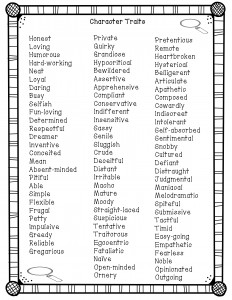
Leveled Lists of Character Traits
3. Read Alouds and Social Studies Inquiry
I strategically pick the first read aloud novel of the year to be social studies related. I teach about early humans in sixth grade. If you search, there’s an excellent chance that you’ll find quality literature that’s historical or realistic fiction and addresses a specific time period. I use a composition notebook for social studies. In it we sketch the shelters mentioned in the novel and the tools we read about. We look up examples in books and online. I also have tools I’ve collected from various sources (lucky me!) in my classroom, so I pull them out. In the past, I’ve had experts from our local area come in to either make stone tools or show their collection.
Target your read alouds so they address multiple content areas
We discuss how the tools, clothing, and shelter we see in the novel show a time period, and how the food source is dependent on the setting. Climate and season can each affect the plot of the story, so we delve into this idea and relate it to the environment around us. We consider that if we were early humans in our area, what sources of food would we have access to? What type of shelter could be built? What type of clothing would we wear? (again, the importance of setting!) Noting the social structure of the groups in the novel is perfect for discussing social structure in early times and in modern times. Think about division of labor. It’s in the novel too, as well as medicine, religion, geography, economics, etc. Now I know that I can’t spend the entire year on the first read aloud, but as I read my first novel aloud I address these key concepts. We also refer back to the novel when we target the content in our standards. I love using this source for reading response questions.
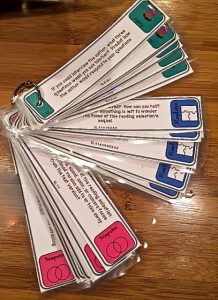
Reading Response Questions
I hope you find the powerful potential in a great read aloud novel. I’m linking up with some great teacher-authors. 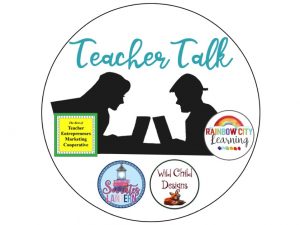

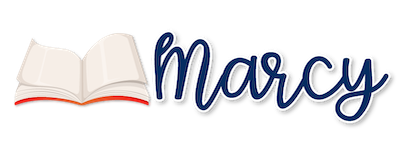
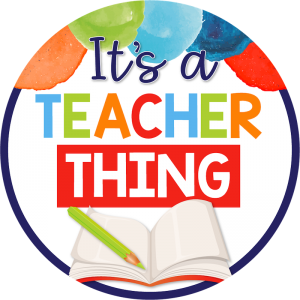
Thanks for these terrific ideas! I love how read alouds can cover so many subject areas and topics. I also use a lot of historical fiction novels for read alouds, as well as picture books.
Thanks, Kathie. Students often remember the read aloud time more than lesson time, so I figured why not combine the two!
Thanks so much for this helpful post. I love doing read alouds with my 6th graders, they really get into it and love volunteering to read out loud. Thanks for shariing these great ideas.
Thanks, Deann. Classroom read alouds offer so many possibilities.
You are very thorough and informative. I found it very enlightening to read about the multiple ways you connect language arts, reading, and social studies. The lessons are very meaty…YUM! Love all of the resources you mention as tools to assist in these cross-curricular lessons.
Thank you, Margo. Picking the just-right read aloud can really magnify the possibilities of how deep you can dig.